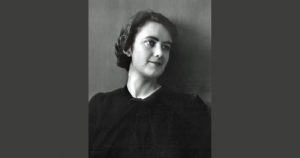 Weird Stuff
Weird Stuff  Weird Stuff
Weird Stuff  Our World
Our World 10 Ways Your Christmas Tree Is More Lit Than You Think
 Movies and TV
Movies and TV The 10 Coolest Stars to Set Sail on The Love Boat
 History
History 10 Things You Didn’t Know About the American National Anthem
 Technology
Technology Top 10 Everyday Tech Buzzwords That Hide a Darker Past
 Humans
Humans 10 Everyday Human Behaviors That Are Actually Survival Instincts
 Animals
Animals 10 Animals That Humiliated and Harmed Historical Leaders
 History
History 10 Most Influential Protests in Modern History
 Creepy
Creepy 10 More Representations of Death from Myth, Legend, and Folktale
 Technology
Technology 10 Scientific Breakthroughs of 2025 That’ll Change Everything
 Weird Stuff
Weird Stuff Ten Bizarre Facts About The Doge Meme
 Our World
Our World 10 Ways Your Christmas Tree Is More Lit Than You Think
 Movies and TV
Movies and TV The 10 Coolest Stars to Set Sail on The Love Boat
Who's Behind Listverse?

Jamie Frater
Head Editor
Jamie founded Listverse due to an insatiable desire to share fascinating, obscure, and bizarre facts. He has been a guest speaker on numerous national radio and television stations and is a five time published author.
More About Us History
History 10 Things You Didn’t Know About the American National Anthem
 Technology
Technology Top 10 Everyday Tech Buzzwords That Hide a Darker Past
 Humans
Humans 10 Everyday Human Behaviors That Are Actually Survival Instincts
 Animals
Animals 10 Animals That Humiliated and Harmed Historical Leaders
 History
History 10 Most Influential Protests in Modern History
 Creepy
Creepy 10 More Representations of Death from Myth, Legend, and Folktale
 Technology
Technology 10 Scientific Breakthroughs of 2025 That’ll Change Everything
Top 10 Lesser-Known Facts about Robert Oppenheimer
Renowned as the “Father of the Atomic Bomb,” J. Robert Oppenheimer was one of the 20th century’s most prominent and intriguing figures. His instrumental leadership in the Manhattan Project during World War II has etched his name into the annals of history. However, beneath the luminous glow of his scientific achievement lies a complex, multi-faceted character whose life encompassed a broad spectrum of interests, profound paradoxes, and unexpected influences.
This selection of lesser-known facts seeks to delve beyond Oppenheimer’s familiar image and unravel the layers of the man behind the atomic bomb. The compilation presents a journey through the uncharted territories of his life, exploring a myriad of influences, from his deep affinity for Eastern philosophy to his tumultuous political involvements and the intriguing tales of his personal life. Each fact is a gateway into Oppenheimer’s world, which remains compelling and relevant even as we traverse further into the 21st century. From the annals of science to the intricate realm of humanity, here are ten lesser-known facts about Robert Oppenheimer that shine a different light on his remarkable life.
Related: Top 10 Near Misses With Nuclear Weapons
10 The Multilingual Mastery of Oppenheimer
One fact that stands out about Robert Oppenheimer’s life is his exceptional linguistic prowess. Beyond his substantial scientific achievements, Oppenheimer was a man with a deep affinity for languages and the classics. Raised in an educational environment that emphasized not only the sciences but also the humanities, he developed an eclectic range of interests that spanned the Greek, Latin, French, and German languages.
What truly catches the eye, however, is the speed and dedication with which Oppenheimer could learn a new language when required. It was reported that he mastered Dutch in a mere six weeks, solely for the purpose of delivering a technical talk in the Netherlands. This feat not only underscores his intellectual capability but also provides a glimpse into his dedication to knowledge and understanding.
His quick adaptability to new languages was not just a display of his exceptional cognitive abilities but also a testament to his passion for authenticity, preferring to access knowledge in its original language whenever possible. His love for languages further extended to a lifelong interest in the classics and Eastern philosophy, adding rich dimensions to his personality that went far beyond his pivotal role in the Manhattan Project.[1]
9 The Disturbing Tale of Oppenheimer’s Poisoned Apple

Robert Oppenheimer is renowned as the father of the atomic bomb, a brilliant physicist with a quick mind that could leap from one complex topic to another. However, a fascinating and somewhat disturbing episode from his past unveils a darker aspect of his character, highlighting a real-life narrative akin to a chilling Dostoevsky tale.
In 1926, during a vacation in Corsica with his fellow students from Cambridge University, Oppenheimer revealed a shocking secret. After displaying an uncharacteristic agitation for several days, he confessed to having attempted to murder his tutor back in Cambridge. His weapon of choice was an apple, injected with poisonous chemicals, which he left on the tutor’s desk. His friends were appalled at the revelation, struggling to comprehend how he could immerse himself in the joys of vacation while a murder plot was potentially unraveling back at the university.
This unnerving incident presented the first glimpse of the deep-seated torment within Oppenheimer, a quality he admired in Dostoyevsky’s exploration of the human condition. It exposed a darker side to the restless intellect that he was famous for and highlighted a complexity that went far beyond his impressive academic achievements. His friends had expected a vacation filled with intellectual discourse and exploration, only to discover a sinister undercurrent to Oppenheimer’s brilliance.[2]
8 Oppenheimer: The Quantum Physics Enthusiast
An intriguing fact about J. Robert Oppenheimer is his early passion and rapid advancement in the study of quantum physics. Quantum physics, a revolutionary branch of physics that describes the world at the smallest scales, deeply fascinated Oppenheimer from the early stages of his academic journey. In 1925, he graduated summa cum laude from Harvard, showcasing a remarkable intellectual capacity. He was not content to stay within the realm of traditional physics, however.
Eager for more rigorous research and study, Oppenheimer subsequently traveled to the University of Göttingen in Germany, one of the world’s leading research institutions at that time, to study quantum physics. There, he had the opportunity to meet and study with some of the most prominent figures in the field, including Max Born and Niels Bohr.
This extraordinary phase in his life culminated in 1927 when Oppenheimer, along with Max Born, developed the Born-Oppenheimer Approximation, an influential model in molecular quantum mechanics. This groundbreaking work, indicative of his early dedication to quantum physics, was a significant contribution to the scientific community. It showcased not only his inquisitive nature and keen intellect but also his capacity for innovation and collaboration, traits that would later prove invaluable in his leadership of the Manhattan Project.[3]
7 Communist Connections: Oppenheimer’s Political Ties
A fascinating aspect of the life of J. Robert Oppenheimer is his complex relationship with communist movements during the peak of the Cold War. Despite being the director of the Manhattan Project, Oppenheimer’s early associations with the American Communist Party were not a hidden chapter of his life. Oppenheimer’s social circle during his tenure at the University of California, Berkeley, was teeming with members of the American Communist Party or those sympathizing with communist ideals. David Hawkins, a friend and colleague of Oppenheimer at Berkeley, even described their shared political position as “pulling the New Deal to the left. That was our mission in life.”
Interestingly, Oppenheimer, known for his sense of humor, responded on a Manhattan Project security questionnaire that he “probably belonged to every Communist-front organization on the West Coast,” albeit half-jokingly. Moreover, despite his communist ties, Oppenheimer was considered so critical to the success of the Manhattan Project that General Leslie R. Groves dismissed concerns about his political background and insisted on his security clearance.
These communist affiliations, however, would later play a role in the revocation of his security clearance in 1954, marking a dramatic turning point in Oppenheimer’s career and life.[4]
6 The Significance of the Enrico Fermi Presidential Award
One captivating aspect that emerges is the prominence and significance of the Enrico Fermi Presidential Award. Established in 1956, two years after Enrico Fermi, a physicist renowned for his crucial role in the development of atomic energy, was honored by President Eisenhower and the Atomic Energy Commission. This award stands as a tribute to Fermi, an Italian-born naturalized American citizen and a 1938 Nobel Laureate in Physics. Known for pioneering the first nuclear chain reaction and his vast contributions in multiple scientific domains, Fermi’s legacy continues to inspire future generations through this award.
The Enrico Fermi Presidential Award, one of the oldest and most prestigious science and technology honors bestowed by the U.S. Government, recognizes exceptional scientific, technical, engineering, policy, or management achievements related to the missions of the U.S. Department of Energy and its programs. This Presidential award comes with a citation signed by the President and the Secretary of Energy, a gold-plated medal bearing the likeness of Enrico Fermi, and a generous honorarium of $100,000.
Its roster of laureates, including remarkable minds such as John von Neumann, Ernest O. Lawrence, and J. Robert Oppenheimer, stands testament to the award’s prestige and the extraordinary caliber of the scientists it celebrates. It’s not just an honor but also a potent motivator, encouraging excellence in research in energy science and technology and serving as a beacon for those who aspire to make significant contributions in these fields.[5]
5 Mixing Physics and Martinis: Oppenheimer’s Unique Recipe

An intriguing aspect of J. Robert Oppenheimer’s life, aside from his enormous contributions to science, is his fondness for crafting a distinctive martini. As the scientific head of the Manhattan Project and a social focal point among his peers, Oppenheimer often held parties and casual get-togethers at his residence in Los Alamos. Among the convivial offerings was his unique martini recipe, consisting of four ounces of gin and a splash of vermouth. Distinguishing his creation further, he added an unexpected touch: the rim of the chilled glass was carefully dipped in a mixture of honey and lime juice.
Pat Sherr, the wife of a laboratory physicist, described Oppenheimer’s martinis as “the most delicious and coldest” she had ever tasted. This tidbit showcases a lesser-known side of Oppenheimer’s persona: his flair for hosting and his knack for mixology.
Not only does it humanize the famed physicist, but it also adds a touch of relatable whimsy to his often austere image. Through these gatherings, Oppenheimer extended his influence beyond the realm of atomic physics, subtly intertwining the scientific and social domains, all while wielding a cocktail shaker.[6]
4 New Mexico: The State That Stole Oppenheimer’s Heart
One striking aspect of Robert Oppenheimer’s life is his deep, lifelong love for the state of New Mexico, which first sparked during his recovery from dysentery in 1922. To aid his convalescence, Oppenheimer’s father suggested he experience the healing powers of the outdoors in New Mexico. The future physicist spent that time horseback riding and traversing through the stunning landscapes of the Sangre de Christo and Jemez Mountain Ranges. The region’s captivating beauty left an indelible mark on him, and his adventures in the wilderness culminated in an unforgettable visit to the Los Alamos Ranch School. Little did he know then, but two decades later, this very site would become the hub of the Manhattan Project upon Oppenheimer’s own suggestion.
Oppenheimer’s bond with New Mexico endured and deepened over time. Even as he progressed through his illustrious career in physics, he regularly returned to the state that had so profoundly impacted him in his youth. In the summer of 1928, he and his younger brother Frank went on horse-packing trips in the area, and Oppenheimer even rented a rustic cabin on 154 acres in the Sangre de Cristo Mountains, which he eventually purchased in 1947.
Nicknamed “Perro Caliente” or “Hot Dog,” this cabin signified Oppenheimer’s permanent attachment to his beloved New Mexico. His affinity for the state serves to highlight the influence of place on personal identity, and in Oppenheimer’s case, the pivotal role it played in shaping the course of global history.[7]
3 Jean Tatlock: An Influential Figure in Oppenheimer’s Life

One intriguing aspect of Oppenheimer’s life is the tragic end of Jean Tatlock, an American physician, psychiatrist, and noted communist sympathizer. Despite her accomplishments in the field of psychiatry, Tatlock is perhaps most renowned for her relationship with J. Robert Oppenheimer.
In the mid-1930s, Tatlock was introduced to Oppenheimer, then a professor at the University of California, Berkeley. Their relationship deepened into an intellectual and emotional bond, with Oppenheimer proposing marriage to Tatlock twice. Despite declining both proposals, Tatlock continued to have a profound influence on Oppenheimer’s life, even drawing him into her sphere of communist sympathies.
This connection would later have serious implications for Oppenheimer when he was under consideration to lead the Manhattan Project, the top-secret program to develop an atomic bomb. The Federal Bureau of Investigation (FBI) opened a file on Oppenheimer, keenly interested in his past associations with communist organizations, including his relationship with Tatlock. The pair’s relationship was further complicated when their activities, including a fateful meeting in 1943, were monitored by intelligence agents, adding another layer of intrigue to this fascinating chapter of history.[8]
2 Oppenheimer’s Hidden Battle: Mental Health Struggles
Oppenheimer had a complex relationship with his own mental health, interwoven with his extraordinary intellectual pursuits. Known for his prodigious intelligence, Oppenheimer achieved remarkable scientific milestones. Yet beneath this veneer of achievement, he battled with deep-seated mental health issues. Oppenheimer’s struggle with mental health was particularly intense during his time at Cambridge’s Cavendish Laboratory, where he felt confined by the routine lab work and the lack of dynamism in experimental physics. His passion for theoretical physics was met with mundane tasks, leading him to an emotional nadir.
Notably, Oppenheimer’s mental health challenges did not abate after Cambridge. His lead role in the Manhattan Project and the subsequent creation of the atomic bomb compounded his psychological distress. Following the bombings of Hiroshima and Nagasaki, Oppenheimer was confronted by the colossal destruction his scientific work had contributed to, leading him into a spiral of guilt and regret.
This period of his life illuminates the immense pressure and moral dilemma he wrestled with, causing him to resign from the Los Alamos lab and withdraw from the public eye. His experience is a stark reminder that even the most brilliant minds can struggle with mental health. It underscores the importance of compassionate understanding and support for those grappling with such issues.[9]
1 Posthumous Justice: Reinstating Oppenheimer’s Clearance
A fascinating moment in J. Robert Oppenheimer’s posthumous narrative is the restoration of his security clearance in late 2022, a move initiated by the U.S. Secretary of Energy, Jennifer Granholm. This effectively overturned the decision of the U.S. Atomic Energy Commission from 1954, which had revoked Oppenheimer’s clearance amid allegations of ties to communism. This action significantly impacted Oppenheimer’s life and scientific career, effectively severing his contributions to further advancements in nuclear research.
The rescindment of the 1954 decision offers a form of retroactive justice, acknowledging the unfair personal and political attacks Oppenheimer had to endure. It highlights the enduring recognition of Oppenheimer’s monumental contributions to science and the world, including his role as the director of the Manhattan Project, where he led a team to develop the atomic bomb in an astounding 27 months.
While the reinstatement cannot undo the challenges Oppenheimer faced during his lifetime, it’s a significant gesture, signifying an effort to right the historical wrongs and restore his legacy in the annals of American science and history.[10]








